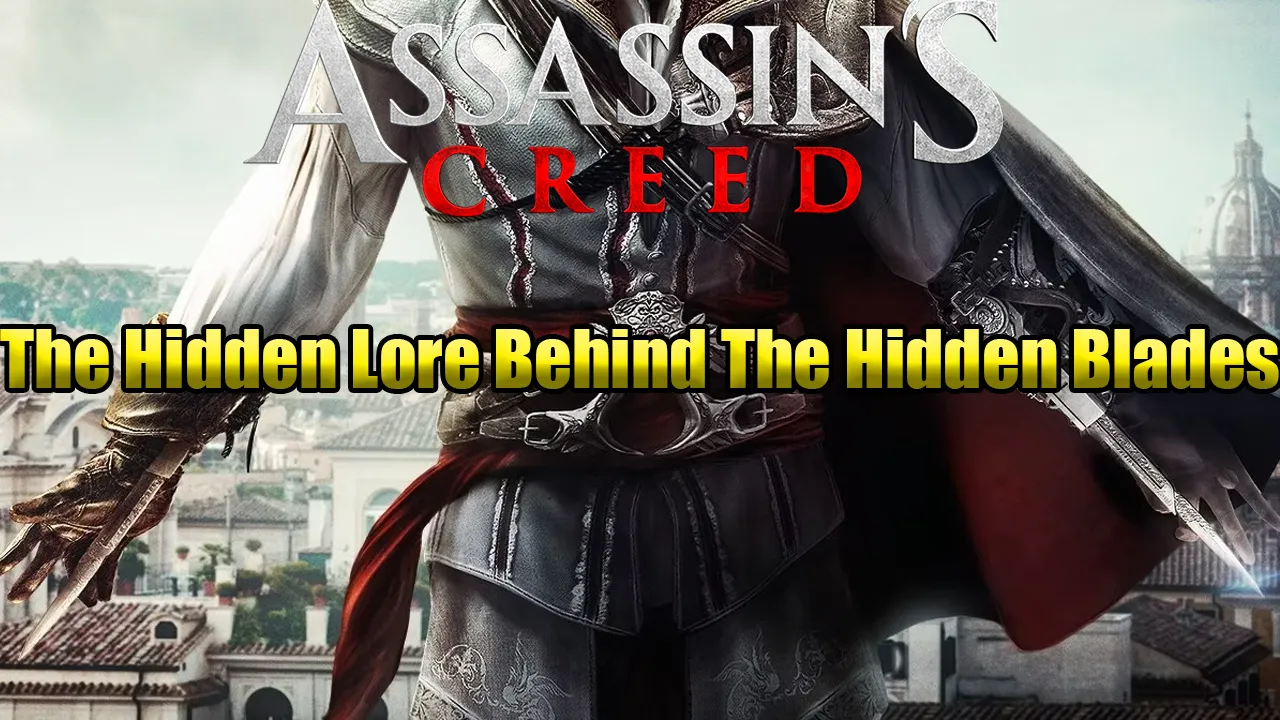
Have you ever had just a bad week? Like nothing bad has actually happened, but it’s just bad in general? I have, and it sucks. It usually happens around this time of year when it gets darker a lot earlier ( Yay, to seasonal depression). So this week I’ve been pretty much doing jack shit and have been doing a lot of thinking.
A while ago I had an idea of during a “hidden lore” series, where I talk about some video game lore people may not know about, this could be because it is hidden in other media, tucked away in the game, or stuff like that. So I finally decided to bite the bullet and create the first post of it.
I’ve been playing AC Valhalla lately, and one of the things that always amazes me about the game is the hidden blade ( which isn’t original as you think as the Angel tv show did it first).
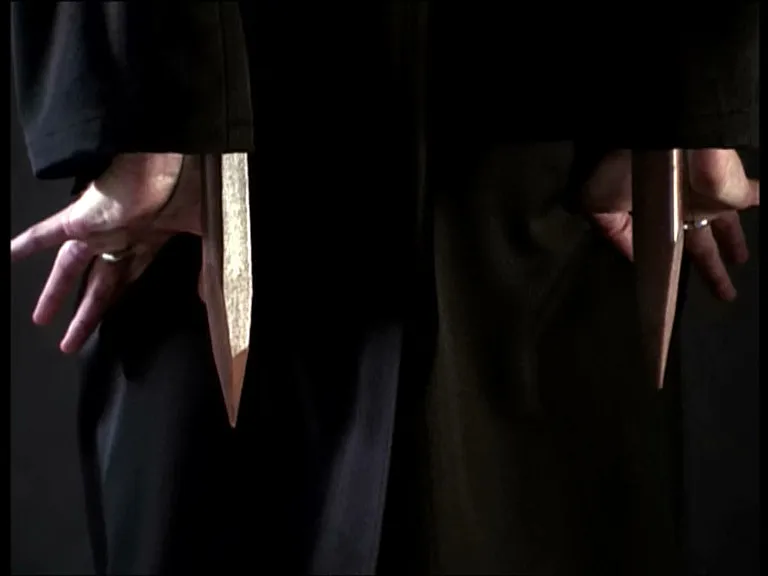
Image Source
If you’ve played the older games you would remember a scene from AC2 where Ezio brings his father’s hidden blade to Da Vinci so that he could repair. Da Vinci does, but claims that the blade requires a sacrifice ( the ring finger) but he had modified it. Well, in the book renaissance, a retelling of the AC2 game which includes a lot of stuff the game leaves out, it’s explained further.
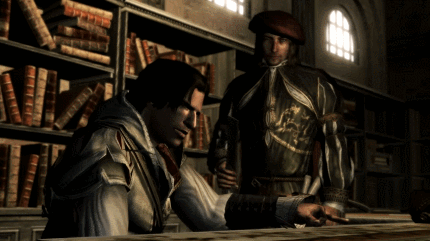
Image Source
The reason for the sacrifice is a simple one. Do you guys remember the scene in Origins when Bayek goes to kill a target with the blade, only to have his ring finger get cut off? If you guys can’t, I’ll leave a vid of it below.

As you can see, Bayek had his fist closed, which results in him losing the finger. The hidden blade needs to be used in a very specific way, even with Da Vinci’s modified version of it. The original version required the removal of the ring finger for a few reasons, 1. it was so that nobody would cut their finger off by mistake, as in order to use the blade, one must bend their wrist and flex their way in a very specific way, and 2. it was to show loyalty to the creed.
When Leonardo modifies the hidden blade in AC2, he just makes it so that it wouldn’t cut off the finger if improperly used, however it doesn’t mean that it still doesn’t cut the finger.
Despite the modification, Ezio kept nicking his ring finger whenever he used the hidden blade. In order to stop this, he dawned a glove. (IIRC, it was actually a metal glove on his left hand, but I'm not sure if that is 100% correct or not)
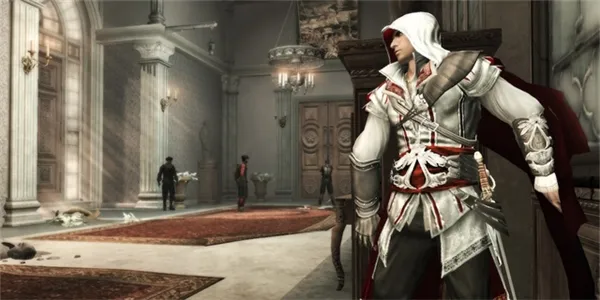
Image Source
How The hidden blade became a signature weapon
The first time the hidden blade makes an appearance “Canonically” is during the DLC Legacy of the Hidden Blade. Darius, the assassin of King Xerxes 1, was the creator of the weapon. And canonically, this is where things stop being simple, so you’re in for a ride.
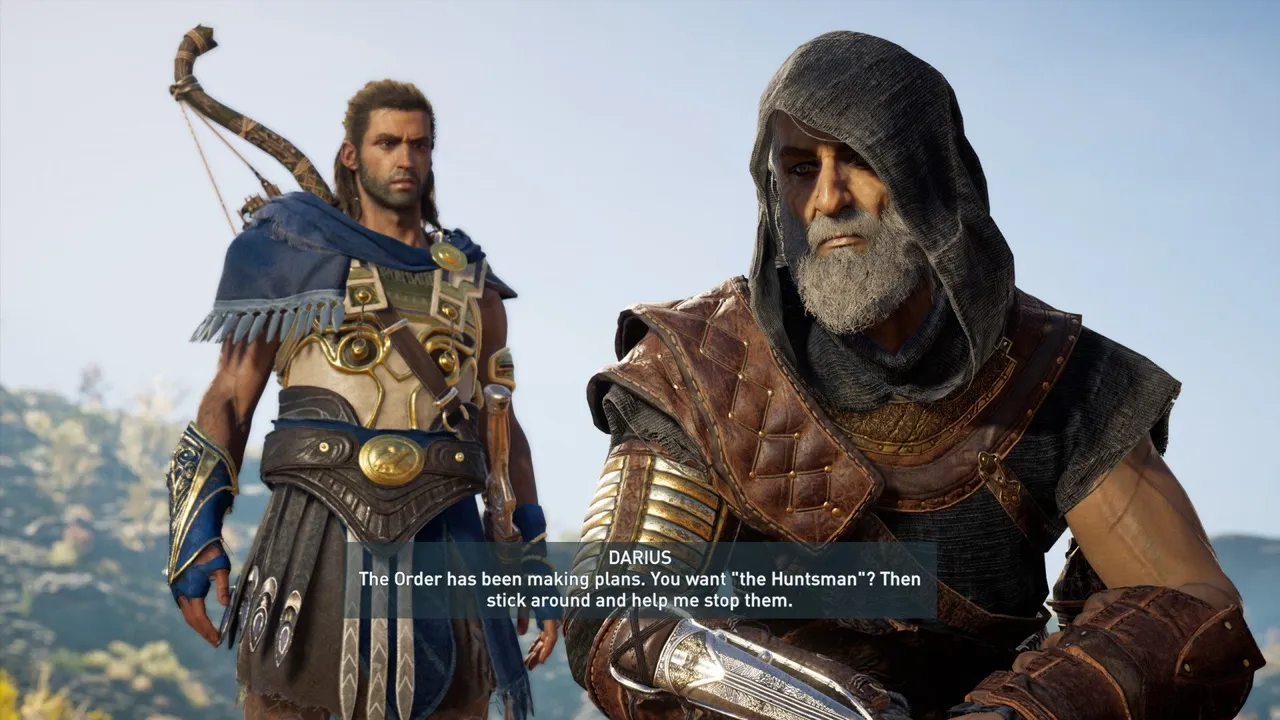
After Darius goes to Egypt with either Alexandros or Kassandra’s kid, we don’t know what happens to The Hidden Blade, until it appears again in Origins, where Aya ( a descendant of Alexandros/Kassandra) is gifted one from Cleopatra, and gives that one to Bayek while she kept a replica she made for herself. How the hidden blade came into Cleopatra’s care is unknown.
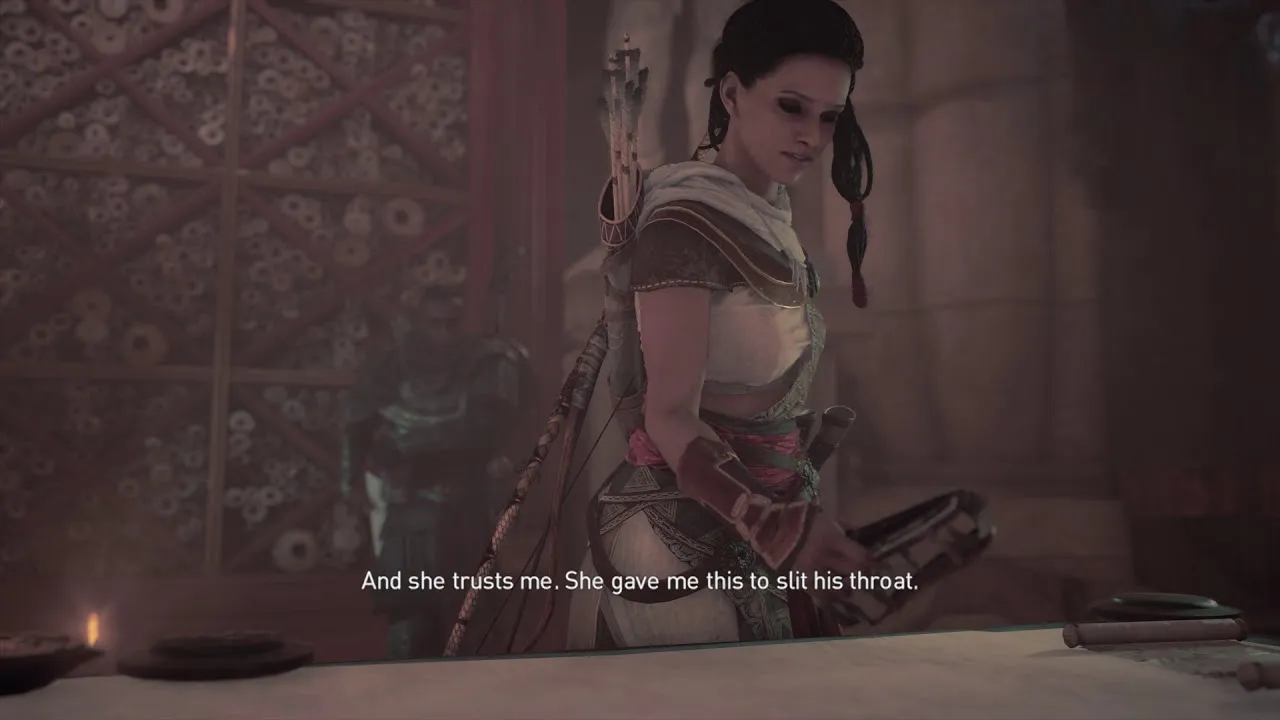
Image Source
The Hidden Blade would become a signature weapon of The Hidden Ones, and later The Assassins. In Valhalla, we both see Hytham and Basim with them. And through them, Eivor acquired the blade. However, instead of wearing it on the underside of her wrist, she instead wore it on her forearm, similar to how Darius wore his, thus didn’t require the removal of the ring finger.

Image Source
By the time AC comes around, every assassin has one. In fact, the removal of the ring finger had become a common way for Templars to spot those of the order. So when Altair took over as Mentor, he, with the help of the AOE, redesigned it so that one wouldn’t need to remove the ring finger. Instead, in order to show loyalty to the order, one would get branded on the ring finger, tattooed, or some brotherhoods even still removed the finger.
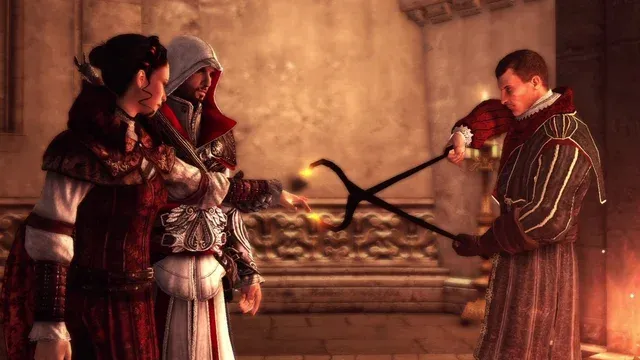
Image Source
These designs were lost, but later found which is how Da Vinci is able to modify the blade.
Time for some confusing crap.
One thing that is confusing, at least for me, is the design of the blade. In AC1 a string is attached to the blade that is tied around the pinky finger. When the string was pulled, the hidden blade would pop out. It wouldn’t be until Altair made the redesigns after the events of AC1 that the blade only required the flexing of the wrist.
It’s simple, right? Well, not really, because prior to the Levantine Brotherhood developing this, this exact design can still be seen. In fact, we never see any previous assassins ( pre Altair) can be seen with the string around the pinky. In fact, every hidden blade ( Bayek/Aya, Kassandra, Eivor,) is activated via a pressure plate.
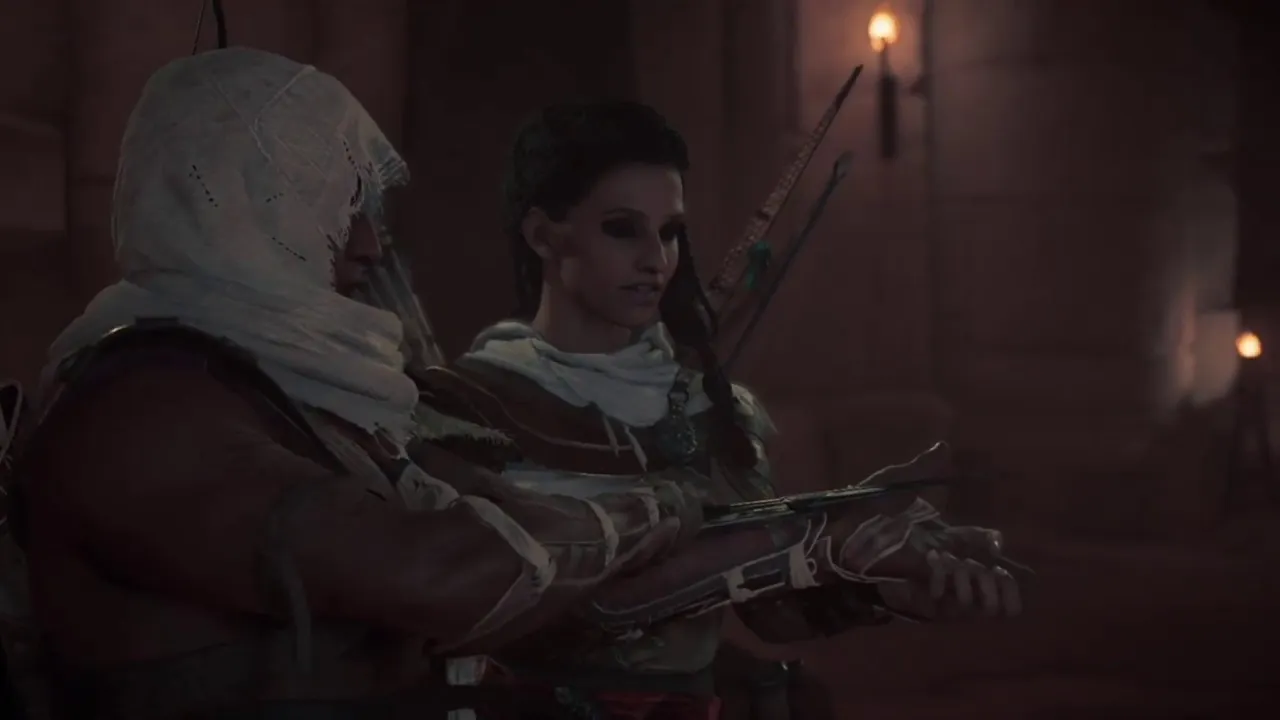
Image Source
Now it may not be a big deal for some, but for a geek like me, it is. Would be that hard just to include a string tied to the pinky? Or some other sort of design? You could argue that the Levantine Brotherhood invented the whole string design, but if hidden blades were already activated via a pressure plate, why would they downgrade?
Different times, Different Designs
Of course, there are many variations of the hidden blade, we see in AC Revelations, the hook blade being introduce, we have seen the foot blade in AC China/Embers, we have Connor’s pivot blade, and if we take a trip up the timeline, we eventually have the shock blade, which Shawn uses in Syndicate to kill a templar baddie!

Image Source
This isn’t even to talk about all the “extra features” the blade has. Poison darts, crossbow, gun, the phantom blade, or the Poison blade.
This is to say that not every single AC blade has all the designs. In fact, we often see some removed and replaced with others. It all really depends on the time and the branch of the Assassins we are dealing with!
It’s really cool to see what the folks over at Ubisoft come up with.
Anyway, I hope you guys learned something by reading this! Now I would be lying if I said I remembered all of this off the top of my head. In order to refresh my memory on a few things, I used the [Assassins Creed Fandom Wiki]
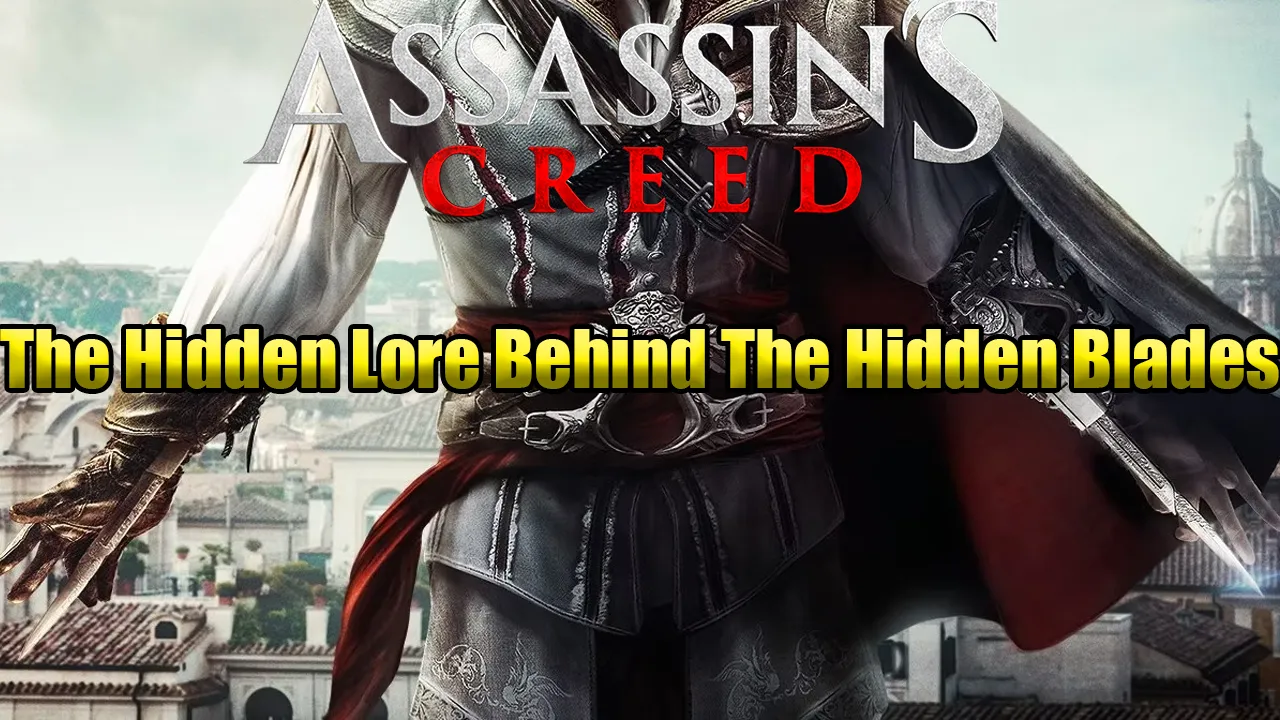
¿Alguna vez has tenido una mala semana? ¿Como si no hubiera pasado nada malo en realidad, pero es simplemente malo en general? Yo tengo, y apesta. Por lo general, ocurre en esta época del año cuando oscurece mucho antes (sí, a la depresión estacional). Así que esta semana he estado haciendo bastante mierda y he estado pensando mucho.
Hace un tiempo tuve una idea durante una serie de "conocimientos ocultos", donde hablo sobre algunos conocimientos de videojuegos que la gente quizás no conozca, esto podría deberse a que está oculto en otros medios, escondido en el juego, o cosas como que. Así que finalmente decidí morder la bala y crear la primera publicación.
He estado jugando AC Valhalla últimamente, y una de las cosas que siempre me sorprende del juego es la espada oculta (que no es original como crees, ya que el programa de televisión Angel lo hizo primero).

Si has jugado a los juegos más antiguos, recordarás una escena de AC2 en la que Ezio le lleva la hoja oculta de su padre a Da Vinci para que pueda repararla. Da Vinci lo hace, pero afirma que la hoja requiere un sacrificio (el dedo anular) pero la había modificado. Bueno, en el libro Renaissance, un recuento del juego AC2 que incluye muchas cosas que el juego deja fuera, se explica con más detalle.

La razón del sacrificio es simple. ¿Recuerdan la escena en Origins cuando Bayek va a matar a un objetivo con la espada, solo para que le corten el dedo anular? Si no pueden, dejaré un video a continuación.

Como puede ver, Bayek tenía el puño cerrado, lo que hace que pierda el dedo. La hoja oculta debe usarse de una manera muy específica, incluso con la versión modificada de Da Vinci. La versión original requería la extracción del dedo anular por varias razones, 1. era para que nadie se cortara el dedo por error, ya que para usar la hoja, uno debe doblar la muñeca y flexionarla de una manera muy manera específica, y 2. era para mostrar lealtad al credo.
Cuando Leonardo modifica la cuchilla oculta en AC2, simplemente lo hace para que no corte el dedo si se usa incorrectamente, sin embargo, eso no significa que todavía no corte el dedo.
A pesar de la modificación, Ezio seguía cortándose el dedo anular cada vez que usaba la hoja oculta. Para detener esto, amaneció un guante. (IIRC, en realidad era un guante de metal en su mano izquierda, pero no estoy seguro de si eso es 100% correcto o no)

Cómo la hoja oculta se convirtió en un arma distintiva
La primera vez que la hoja oculta aparece "canónicamente" es durante el DLC Legacy of the Hidden Blade. Darius, el asesino del rey Xerxes 1, fue el creador del arma. Y canónicamente, aquí es donde las cosas dejan de ser simples, por lo que te espera un viaje.
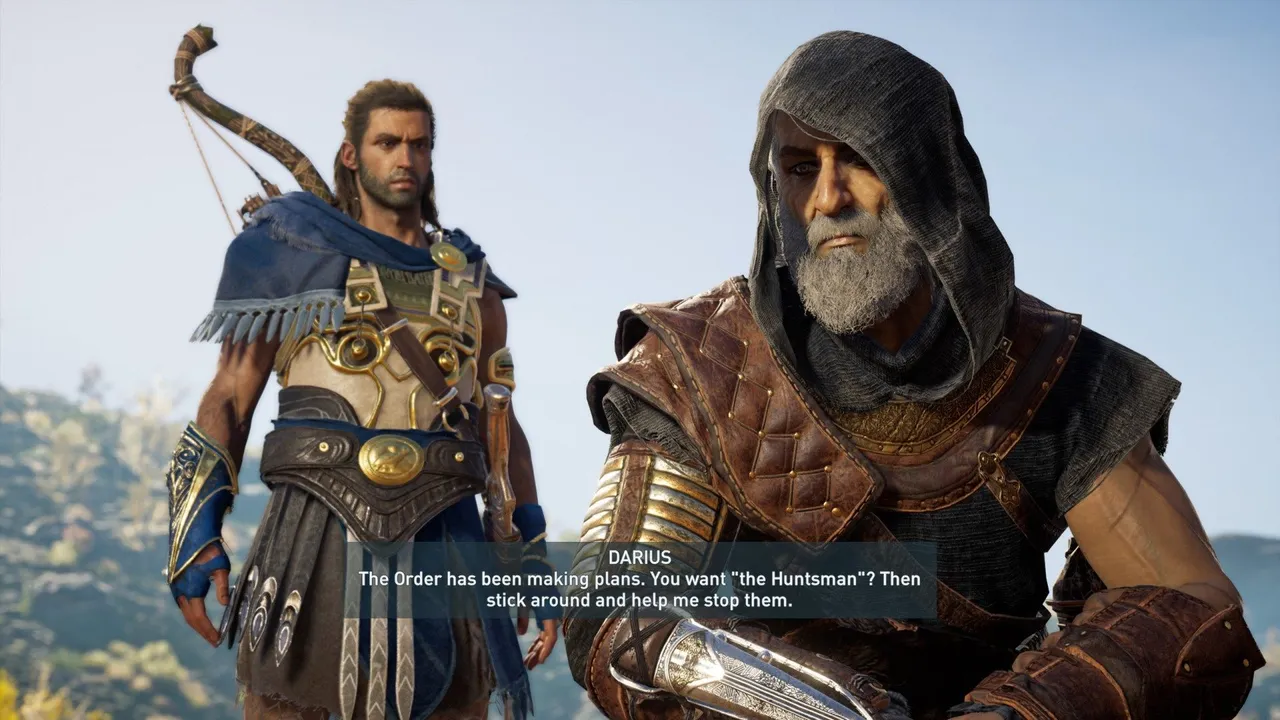
Después de que Darius va a Egipto con Alexandros o el hijo de Kassandra, no sabemos qué le sucede a The Hidden Blade, hasta que aparece nuevamente en Origins, donde Aya (descendiente de Alexandros/Kassandra) recibe uno de Cleopatra, y le da ese uno a Bayek mientras ella guardaba una réplica que hizo para ella misma. Se desconoce cómo la hoja oculta llegó al cuidado de Cleopatra.

La hoja oculta se convertiría en un arma característica de The Hidden Ones y, más tarde, de The Assassins. En Valhalla, ambos vemos a Hytham y Basim con ellos. Y a través de ellos, Eivor adquirió la espada. Sin embargo, en lugar de usarlo en la parte inferior de su muñeca, lo usó en su antebrazo, de manera similar a como Darius usó el suyo, por lo que no requirió que le quitaran el dedo anular.
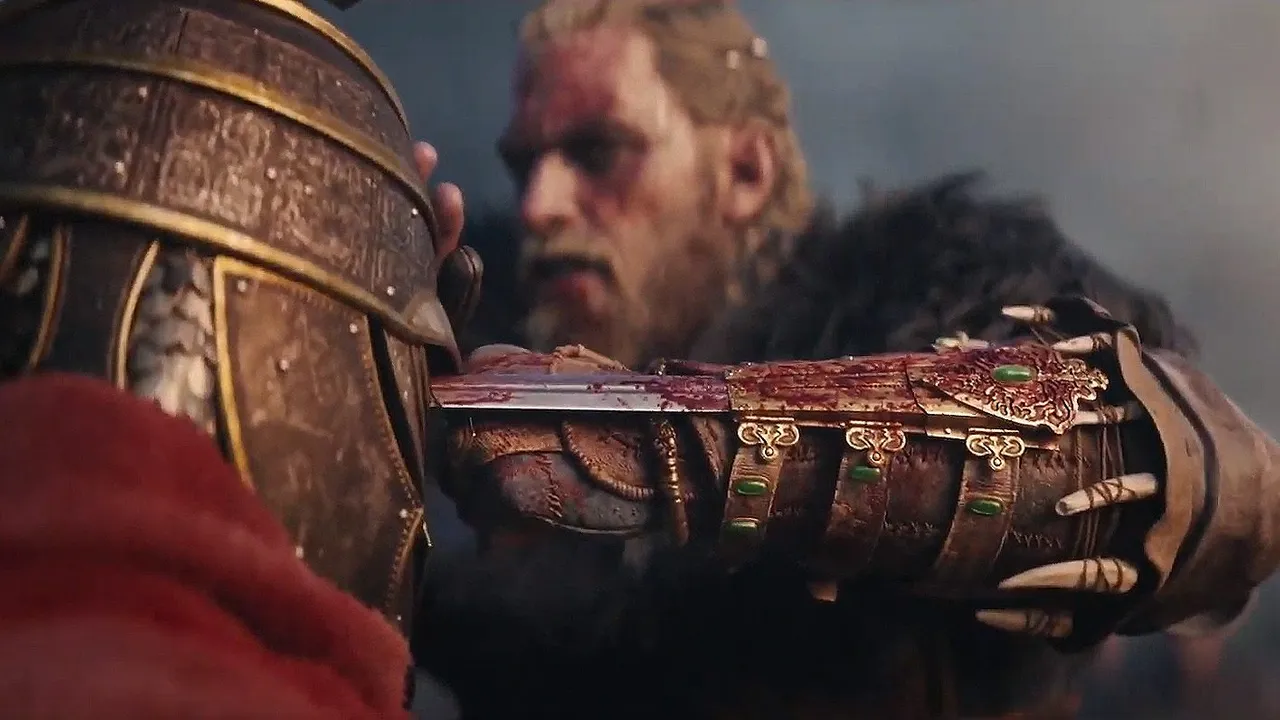
Para cuando aparece AC, cada asesino tiene uno. De hecho, la eliminación del dedo anular se había convertido en una forma común para que los templarios detectaran a los de la orden. Entonces, cuando Altair asumió el cargo de Mentor, él, con la ayuda de AOE, lo rediseñó para que no fuera necesario quitarse el dedo anular. En cambio, para mostrar lealtad a la orden, uno sería marcado en el dedo anular, tatuado o algunas hermandades incluso se quitarían el dedo.

Estos diseños se perdieron, pero luego se descubrió que es así como Da Vinci puede modificar la hoja.
Es hora de una mierda confusa.
Una cosa que es confusa, al menos para mí, es el diseño de la hoja. En AC1, se une una cuerda a la hoja que se ata alrededor del dedo meñique. Cuando se tiraba de la cuerda, la hoja oculta salía. No sería hasta que Altair hizo los rediseños después de los eventos de AC1 que la espada solo requirió la flexión de la muñeca.
Es simple, ¿verdad? Bueno, en realidad no, porque antes de que la Hermandad Levantina desarrollara esto, todavía se puede ver este diseño exacto. De hecho, nunca vemos a ningún asesino anterior (antes de Altair) con la cuerda alrededor del dedo meñique. De hecho, cada hoja oculta (Bayek/Aya, Kassandra, Eivor) se activa a través de una placa de presión.

Ahora puede que no sea un gran problema para algunos, pero para un geek como yo, lo es. ¿Sería tan difícil incluir una cuerda atada al dedo meñique? ¿O algún otro tipo de diseño? Se podría argumentar que la Hermandad Levantina inventó todo el diseño de las cuerdas, pero si las cuchillas ocultas ya estaban activadas a través de una placa de presión, ¿por qué habrían de degradarse?
Diferentes tiempos, diferentes diseños
Por supuesto, hay muchas variaciones de la hoja oculta, vemos en AC Revelations, se introduce la hoja de gancho, hemos visto la hoja de pie en AC China/Embers, tenemos la hoja de pivote de Connor, y si hacemos un viaje por el línea de tiempo, finalmente tenemos la hoja de choque, que Shawn usa en Syndicate para matar a un malvado templario.

Esto ni siquiera es para hablar de todas las "características adicionales" que tiene la cuchilla. Dardos venenosos, ballesta, pistola, hoja fantasma o hoja venenosa.
Esto quiere decir que no todos los blades de CA tienen todos los diseños. De hecho, a menudo vemos algunos eliminados y reemplazados por otros. ¡Realmente todo depende del tiempo y la rama de los Asesinos con los que estemos tratando!
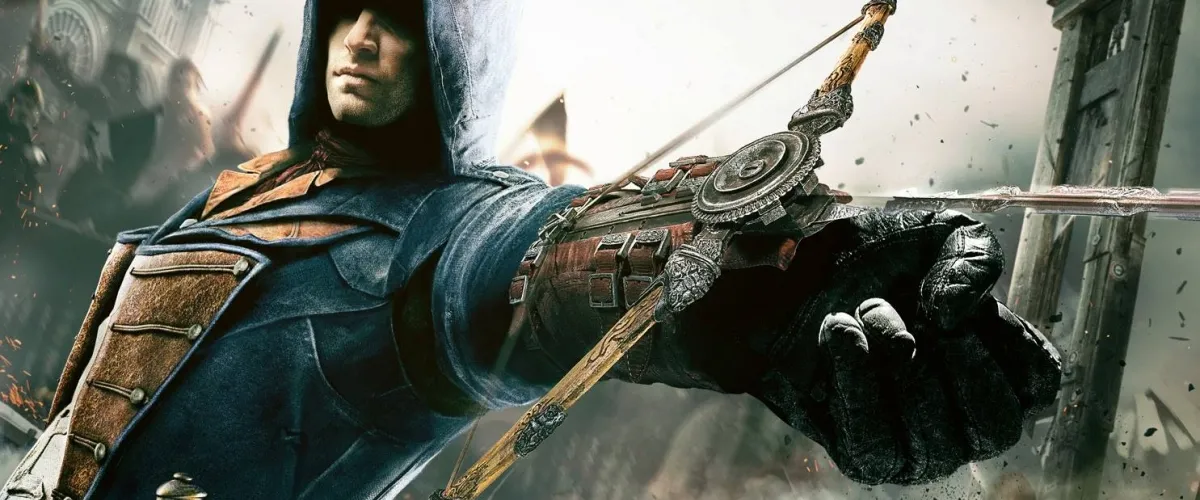
Es realmente genial ver lo que se les ocurre a la gente de Ubisoft.
De todos modos, ¡espero que hayan aprendido algo al leer esto! Ahora estaría mintiendo si dijera que recordé todo esto de la cabeza. Para refrescar mi memoria en algunas cosas, utilicé el Assassins Creed Fandom Wiki